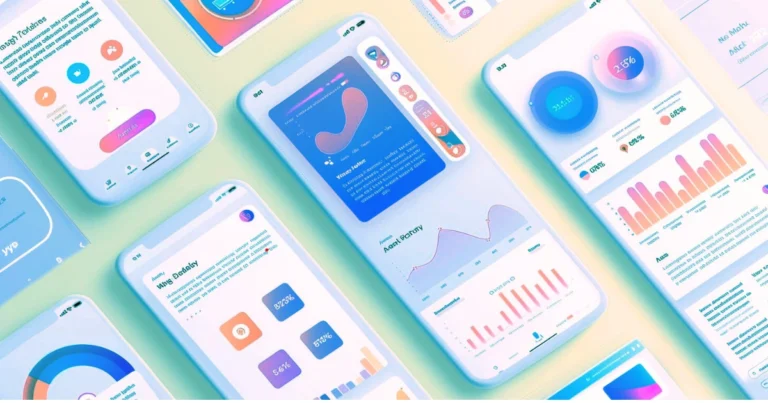Content Marketing for Mobile: Strategies for Success in a Mobile-First World 2024

With the majority of internet users now accessing content primarily through mobile devices, businesses need to adapt their content marketing strategies to accommodate this shift. Content marketing for mobile focuses on delivering valuable, engaging, and accessible content to mobile users. This article will explore what content marketing for mobile entails, its importance, key strategies, and best practices to succeed in a mobile-first digital landscape.
Table of Contents
1. What is Content Marketing for Mobile?
Content marketing for mobile refers to creating and distributing valuable, relevant, and consistent content specifically designed for mobile device users. This can include blog posts, social media updates, videos, infographics, podcasts, and more. The primary objective is to engage a mobile audience, drive conversions, and foster customer loyalty by delivering a seamless and optimized content experience tailored to the unique behaviors and preferences of mobile users.
2. Why Content Marketing for Mobile is Essential
As mobile devices have become the primary medium for accessing the internet, content consumption patterns have dramatically shifted. Here are a few key reasons why content marketing for mobile is critical:
- Widespread Mobile Usage: Mobile accounts for approximately half of web traffic worldwide. In the last quarter of 2023, mobile devices (excluding tablets) generated 58.67 percent of global website traffic. Mobiles and smartphones consistently hoovered around the 50 percent mark since the beginning of 2017, before surpassing it in 2020.
- Mobile-First Indexing: Google prioritizes mobile-optimized websites and content in its search rankings, making mobile-friendly content vital for SEO.
- Shorter Attention Spans: Mobile users tend to have shorter attention spans, making it essential to create content that is quick to consume and easy to navigate.
- On-the-Go Users: Mobile users often engage with content while commuting, waiting in lines, or multitasking, necessitating the creation of content that is easy to access and interact with on smaller screens.
3. Key Strategies for Content Marketing for Mobile
To effectively engage mobile users, businesses must adopt a mobile-first approach to content marketing. Here are several strategies to ensure your content resonates with mobile audiences:
3.1 Optimize for Mobile Devices
Your website and content must be fully optimized for mobile devices. This includes ensuring fast load times, using responsive design that adapts to different screen sizes, and minimizing clutter. Mobile users expect instant access to information, so pages must load quickly, and navigation should be intuitive.
- Responsive Design: Make sure your website and content automatically adjust to fit various screen sizes. A responsive design ensures your content is legible, visually appealing, and easy to interact with on all devices.
- Fast Loading Speed: Mobile users are often on the go and expect quick load times. Use image compression, reduce redirects, and leverage browser caching to improve your website’s loading speed.
3.2 Create Short and Scannable Content
Mobile users often skim through content rather than read it word-for-word. To capture their attention, create short, concise content that is easy to scan and digest.
- Headings and Subheadings: Break up your content with clear and descriptive headings and subheadings. This helps mobile users quickly find the information they’re looking for.
- Bullet Points and Lists: Use bullet points and numbered lists to organize information, making it easier for mobile users to skim through key points.
- Short Paragraphs: Avoid long blocks of text. Instead, keep paragraphs short (1-3 sentences) to make your content more readable on smaller screens.
3.3 Leverage Visual Content
Visual content, such as images, videos, and infographics, is highly engaging on mobile devices. Mobile users are more likely to interact with visual content than lengthy text, so incorporate visuals into your Content Marketing for Mobile strategy.
- Videos: Short, engaging videos are one of the most effective types of mobile content. Optimize videos for mobile playback by ensuring they load quickly and are viewable in both portrait and landscape modes.
- Infographics: Infographics can convey complex information in a visually appealing and easy-to-digest format, making them ideal for mobile users.
- Images and GIFs: Use high-quality images and GIFs to make your content more engaging. However, be sure to compress them for faster load times on mobile devices.
3.4 Focus on Local and Voice Search Optimization
Mobile users often rely on local searches and voice commands to find information quickly. Optimizing your content for local search and voice queries can help you reach mobile audiences more effectively.
- Local SEO: Ensure your content is optimized for local search by including location-specific keywords and phrases. Claim and update your business listings on Google My Business to improve visibility for mobile users.
- Voice Search Optimization: As voice search usage grows, adapt your content to address voice queries. This means using natural language and answering common questions that mobile users might ask via voice commands.
3.5 Incorporate Interactive Content
Interactive content is highly engaging and can significantly enhance the user experience on mobile devices. Consider incorporating quizzes, polls, surveys, and interactive videos into your content marketing strategy.
- Quizzes and Polls: These interactive formats encourage user participation and can increase engagement on mobile platforms. They are especially effective on social media channels.
- Interactive Videos: Create videos that allow users to interact by choosing different paths or actions. This type of content is highly engaging and can increase the amount of time users spend on your content.
3.6 Utilize Push Notifications and SMS Marketing
Push notifications and SMS marketing are effective ways to engage mobile users and drive them back to your content. These direct communication channels allow you to send timely updates, promotional messages, and personalized content to mobile users.
- Push Notifications: Use push notifications to alert users about new blog posts, product launches, or special promotions. Be mindful not to overwhelm users with too many notifications, as this can lead to uninstalls or opt-outs.
- SMS Marketing: SMS marketing allows businesses to send promotional offers or content directly to users’ phones. It’s an immediate and highly effective way to communicate with mobile users, particularly when offering time-sensitive deals.
3.7 Optimize for Social Media
Social media is a key channel for mobile content marketing. Most users access platforms like Facebook, Instagram, and Twitter via their mobile devices. Tailor your content for mobile-friendly formats on social media, such as Stories, vertical videos, and carousel posts.
- Vertical Videos: Ensure that videos you post on platforms like Instagram and TikTok are optimized for vertical viewing, as most users consume social media content in portrait mode.
- Stories and Reels: These short, immersive formats are incredibly popular on mobile and offer a great way to engage users with bite-sized content.
- Carousel Posts: On platforms like Instagram and LinkedIn, use carousel posts to share multiple pieces of content in one post, which allows for deeper engagement without overwhelming the user.
4. Best Practices to Enhance Content Marketing for Mobile
To further enhance your mobile content marketing strategy, consider these best practices:
- A/B Test Your Content: Regularly test different versions of your content (headlines, visuals, CTA buttons) to see what performs best with your mobile audience.
- Mobile-Friendly CTAs: Make sure your calls-to-action (CTAs) are mobile-friendly. Use buttons that are easy to tap and place them strategically within your content to drive conversions.
- Engage with Mobile Analytics: Use analytics tools to track how mobile users engage with your content. Understanding mobile-specific metrics, such as bounce rates, time on site, and device types, will help you refine your strategy.
- Be Consistent: Consistency is key in content marketing. Whether through blogs, videos, or social media posts, maintain a regular content schedule to keep mobile users engaged.
5. Conclusion
As mobile usage continues to rise, optimizing your strategy related to content marketing for mobile users is no longer optional—it’s essential. By creating mobile-friendly content, leveraging visuals and interactive formats, and focusing on local and voice search optimization, you can reach and engage a broader audience in today’s mobile-first world. Remember, the key to successful mobile content marketing lies in understanding the unique behaviors of mobile users and delivering content that is quick, engaging, and easy to navigate on the go.







4 Comments
Comments are closed.